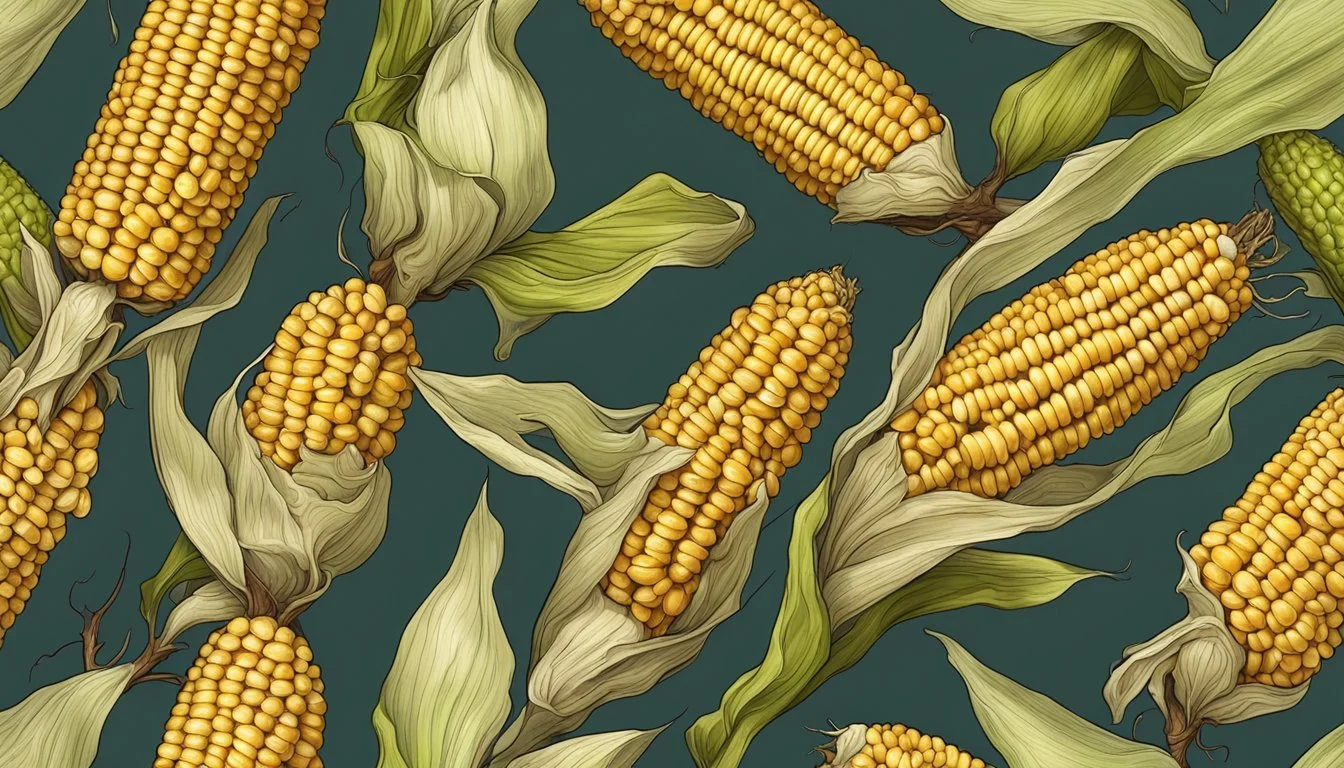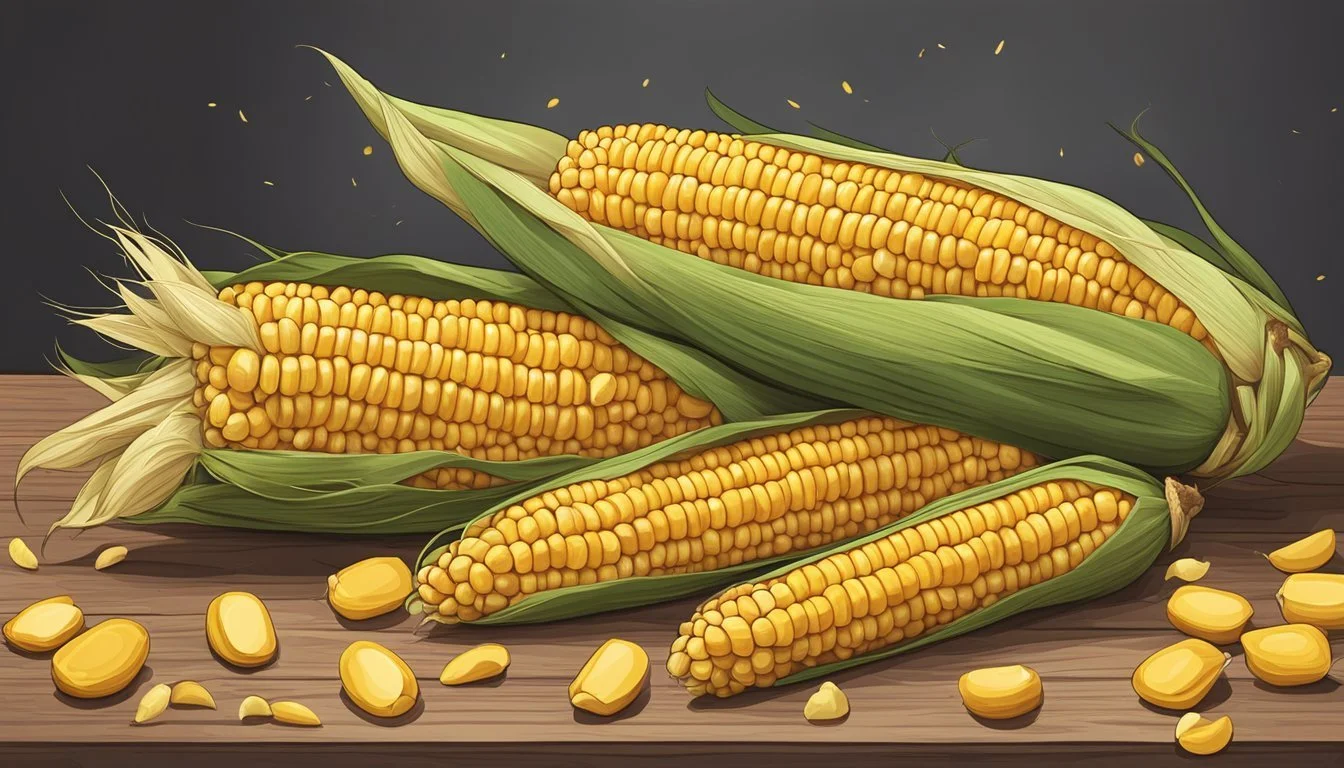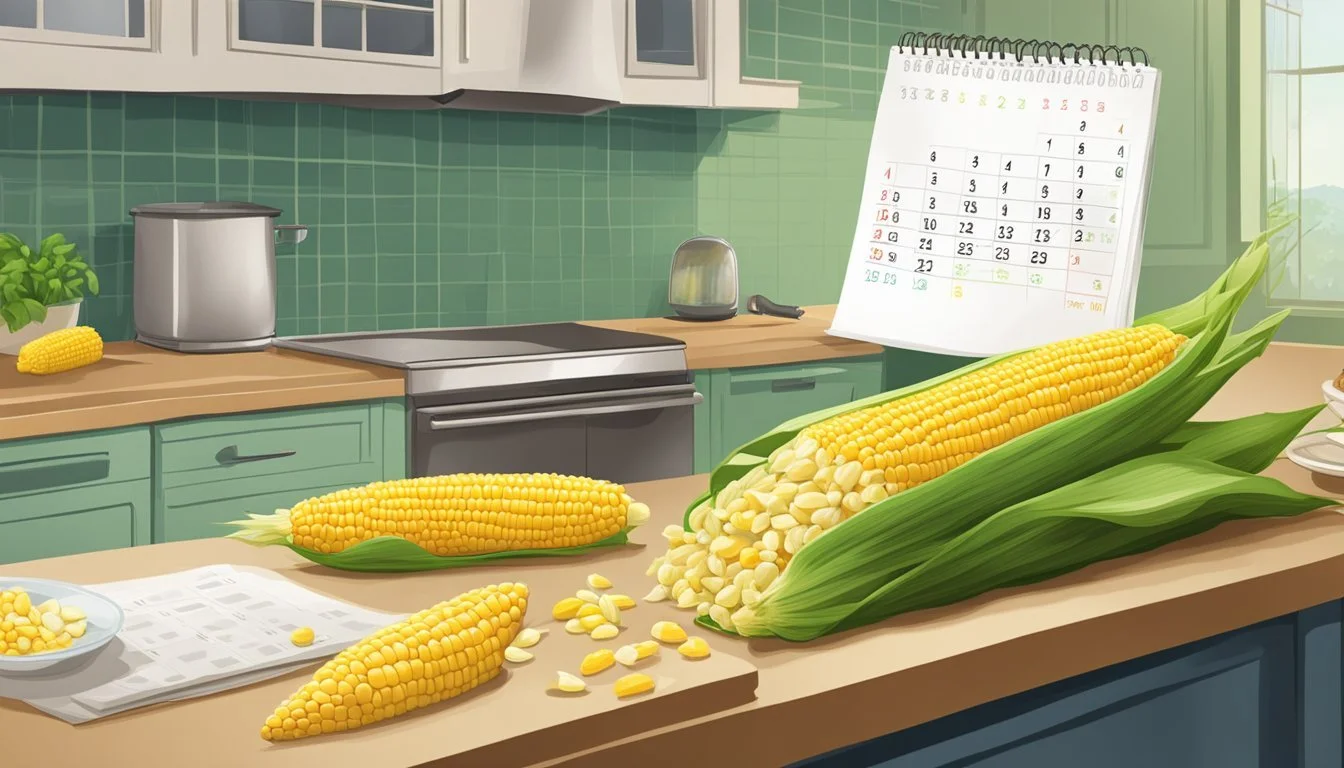How Long Does Corn Last?
Shelf Life and Storage Tips
Corn, a staple in many diets around the world, has a relatively short shelf life that can be extended through proper storage techniques. Fresh corn on the cob typically lasts for 5 to 7 days when stored correctly. It's crucial to keep the husks intact until the corn is ready to be used, as removing them can lead to premature drying out of the kernels. For cooked corn, the same shelf life of 5 to 7 days applies when stored in the refrigerator in airtight containers.
Preservation methods such as freezing can significantly extend corn's longevity. If one chooses to freeze corn, blanching it first is a recommended step to maintain its vibrant color and nutritional quality. Blanching also destroys enzymes that can cause loss of flavor and texture over time. Once blanched, the corn should be cooled, cut off the cob, and stored in freezer bags where it can last for several months.
Understanding Corn and Its Varieties
Corn, a staple grain cultivated in numerous varieties, is cherished for its sweet flavor and versatility. Each variety of corn offers distinct storage capabilities and culinary uses, from fresh corn on the cob enjoyed during summer to preserved forms like frozen or canned corn that provide off-season convenience.
Fresh Corn on the Cob
Fresh corn on the cob is best consumed within a short time frame to maintain its characteristic sweetness and nutritional value. Typically, fresh corn can last in the refrigerator for about 5-7 days. This form of corn is most sought after during the summer months when it is at its peak of freshness and flavor.
Best storage practice: Keep refrigerated in a damp paper towel and store in a plastic bag to retain moisture.
Frozen Corn
Frozen corn is a practical alternative to fresh, preserving the kernels' nutritional content and sweet flavor. The process of freezing corn involves blanching the kernels before flash freezing, which can dramatically extend its shelf life for up to 8-10 months when kept in an airtight container or freezer bag at 0°F or below.
Important tip: To use, thaw only the amount needed, as repeated freezing can compromise quality and taste.
Canned Corn
Canned corn provides longevity and convenience, keeping well for years on the shelf without significant nutritional loss. Canned corn should be consumed before the expiration date on the can to ensure the best taste and nutrient retention. Once opened, canned corn should be refrigerated and is best used within 3-5 days.
Reminder: Drain and rinse canned corn before use to reduce sodium content, which is often high in preserved foods.
Storage Essentials for Corn
Effectively storing corn is crucial in maintaining its sweetness and freshness. Utilizing the correct methods for refrigeration and freezing can greatly extend the shelf life of corn, whether on the cob or as kernels.
Refrigeration Techniques
Corn on the cob is best stored in the refrigerator soon after purchase to retain its freshness. It should be kept in the crisper drawer of the fridge to maintain the right humidity level. To prepare, it is advised to keep the corn in its husks and wrapped in a damp paper towel. Then, place the corn in a sealed plastic bag or a perforated plastic bag to allow for some airflow. This method can keep corn fresh for about 1-3 days.
Freezer Storage Methods
For longer storage, freezing corn is the optimal choice. First, remove the husks and silk from the corn. Briefly blanch the corn ears in boiling water for 4-6 minutes, then quickly place them in ice water to halt the cooking process. Once cooled, pat the corn dry to eliminate excess moisture. Kernels can be cut off the cob if desired. Use airtight containers or freezer bags, making sure to remove as much air as possible. Properly label the bags with the date before placing them in the freezer. Corn stored this way can last up to 10-12 months.
Preventing Spoilage in the Pantry
Storing unhusked corn in a pantry is not recommended, as it may lead to premature spoilage. To temporarily store corn in a cool, dark pantry, keep it in a moist environment and utilize it within one to two days. However, for best results, one should always opt for refrigeration or freezing techniques.
Storing Leftovers
Leftover cooked corn should cool to room temperature. Once cooled, place it in a sealed plastic bag or an airtight container. Be sure to remove as much air as possible before sealing to ensure maximum freshness. Store in the refrigerator and aim to consume within a few days for optimal quality. If the leftovers are substantial, consider freezing them in the same manner as fresh corn.
Shelf Life of Corn
The shelf life of corn varies depending on its state—fresh, cooked, or canned—and how it's stored. Proper storage is key to maximizing longevity and ensuring food safety.
In the Fridge
Fresh corn preserved in its husk can last for 5-7 days when stored in the refrigerator. Once the husk is removed, the kernels begin to dry; however, keeping the husked ears in an airtight bag extends freshness for about a week. For cooked corn, one can expect a shelf life of 3-5 days in the fridge.
When Frozen
Corn maintains its quality longer when frozen. Uncooked corn on the cob stays well for 8-12 months if properly stored, while cooked corn is best used within 10 months. Ensuring that the corn is placed in heavy-duty freezer bags or airtight containers is crucial for prolonging its edible period and preserving its taste.
Canned Corn Durability
Canned corn offers an extended shelf life, often lasting up to 2 years on the shelf. It remains safe beyond the printed expiration date but should be consumed before the date for optimal quality. Once opened, canned corn should be transferred to a sealed container, refrigerated, and used within 3-5 days to maintain food safety.
Preserving Freshness and Quality
When storing fresh corn, maintaining its natural sugar content, nutrient levels, and preventing spoilage are paramount. Proper techniques in handling, freezing, and identifying spoilage are vital to preserving corn's freshness and quality.
Handling Fresh Corn
Corn retains its quality best when it is stored with the husk intact. The husk acts as a natural preservative, maintaining the moisture of the corn and protecting it from drying out. After purchase from the grocery store, corn should be placed in a plastic bag that allows for slight air circulation and then refrigerated to slow the conversion of natural sugars to starch. Handling fresh corn with care is crucial; avoid removing the husk until just before use to maximize freshness.
Freezing Techniques
To freeze fresh corn successfully and maintain quality:
Blanching: Place raw corn in boiling water for a few minutes. Blanching is essential as it halts enzymatic processes that can deteriorate corn quality over time.
Cooling: Immediately immerse the corn in ice water to stop the cooking process; this step is critical to retain nutrients and texture.
Preparation: If freezing the corn off the cob, use a sharp knife to cut the kernels cleanly. For freezing on the cob, ensure the corn is dry before packing.
Packaging: Place the corn in airtight bags or containers, removing as much excess air as possible, preferably by vacuum sealing.
Freezing: Store in the freezer; raw, blanched corn maintains its quality for up to 8 months, while cooked kernels should be used within 4 months.
Detecting Spoilage
Inspect corn for spoilage signs before consumption. Spoiled corn may display:
Color: A color change to a dull yellow may indicate spoilage.
Odor: An off smell is a clear sign that corn is no longer fresh.
Texture: Corn kernels that feel slimy or mushy rather than firm are likely spoiled.
Mold: Any visible signs of mold signify that the corn is rotten and should not be consumed.
By following these storage and preservation steps, the quality of corn can be retained, reducing the rate of spoilage and extending its usability.
Cooking and Usage Tips
When preparing and utilizing corn on the cob, one must consider the method of cooking and potential recipes that enhance both its flavor and longevity.
Preparation Methods
Corn is rich in starch, which contributes to its hearty texture and sweet taste. To maintain its optimal appearance and prevent it from drying out, one can employ various methods.
Grilling: Wrap corn in foil with a pat of butter to keep it moist. It creates a smoky flavor that's a summer favorite.
Boiling: Submerge the corn into boiling water for four minutes. This traditional method is quick and easy.
Blanching: Place the corn in boiling water, then transfer it to ice water to preserve its color and texture before freezing.
Recipe Ideas
Corn on the cob is versatile and can be adapted into countless recipes.
Salads: Add grilled corn kernels to salads for extra texture and a touch of sweetness.
Soups: Combine blanched corn with carrots and other seasonal vegetables from the farmers' market for a nutritious soup.
Seasoning: A simple seasoning of salt, pepper, and butter can enhance the natural flavors of corn without adding excessive calories.
Utilize these tips to enjoy corn's delicious taste in various culinary contexts.
Signs of Deterioration
When assessing the longevity of corn, spotting signs of spoilage is crucial. Recognizing these indicators can help determine if the corn is no longer suitable for consumption.
Visual Indicators
Corn's appearance provides the first clue to its freshness. Signs of deterioration include:
Mold Growth: The presence of white, grey, black, or blue mold spots on the husk, silk, or kernels.
Discoloration: Brown spots on corn kernels can suggest decay.
Overall Dullness: Fresh corn often has a bright green husk and yellow to creamy-white kernels. A loss of color vibrancy can indicate age.
Changes in Smell
A change in aroma is a clear warning of spoiled corn:
Musty or Sour Odor: A rancid or off-putting smell emanating from the corn denotes spoilage.
Moldy Smell: A moldy smell suggests the presence of fungal growth that may not be immediately visible.
Texture Alterations
Other textural changes in corn also signal spoilage:
Slimy or Mushy Texture: This is often felt on the husk or kernels and indicates bacterial growth.
Dried Out: If the kernels or husk feel overly dry or desiccated, the corn may be past its prime.
Detecting these signs can help prevent the consumption of spoiled corn, ensuring food safety and quality.
Health and Safety
When dealing with corn's longevity, it's critical to consider health and safety aspects to prevent foodborne illnesses and ensure nutritional value is retained. Proper storage directly influences these factors.
Food Safety Considerations
Corn should be consumed within 5-7 days if refrigerated, to minimize the risk of spoilage and foodborne pathogens. Once the husk is removed, corn begins to lose moisture, so one should keep the husks on until they plan to use the corn. Refrigeration is required for cooked corn to maintain food safety, also adhering to the 5-7 days guideline. Freezing corn can extend its shelf life up to eight months, but it should be stored at a consistent temperature of 0°F to ensure safety.
State of Corn Shelf Life at Room Temperature Shelf Life Refrigerated Shelf Life Frozen Fresh 1-2 Days 5-7 Days 8 Months or longer Cooked Not Recommended 5-7 Days 8 Months or longer
Nutritional Information
Corn is a source of vitamins and minerals, contributing to a balanced diet. However, as corn ages, its starches can convert into sugars, which may affect its nutritional profile. It's also important to note
Additional Information
In addressing concerns about corn's shelf life and best storage practices, it's imperative to respond to common queries and share strategies for both individual and bulk storage.
Frequently Asked Questions
How long does fresh corn last? Fresh corn typically lasts for 5-7 days when stored properly in the refrigerator with its husks on.
Can you freeze corn? Yes, corn can be frozen. It should be blanched for about 4 minutes, then transferred to cold water before freezing to preserve quality.
What is the best way to store cooked corn leftovers? Cooked corn leftovers should be stored in an airtight container in the refrigerator and are best when consumed within 5-7 days.
How do you know if corn has gone bad? Signs of spoilage include an off smell, a slimy texture, and a change in color.
Storing in Bulk and Portions
For bulk storage, one can remove corn kernels from the cob post-blanching and store them in a zipped freezer bag. Ensure to portion the kernels to suit future meal sizes before freezing. This method facilitates easy access and helps maintain the corn's flavor and texture. To maximize shelf life and convenience, label each bag with the date of storage.
When storing individual portions, wrap each ear of corn tightly in plastic wrap or place in a plastic bag with some air circulation to maintain moisture without encouraging mold growth. Leftovers can be stored similarly in secured containers or bags, making sure portions fit expected consumption to avoid waste.
Consumer Resources
When considering the purchase and preservation of corn, consumers can turn to specific venues to procure quality produce and must have the right equipment to maintain its freshness.
Best Places to Buy Corn
Grocery Stores:
Consumers often find a wide variety of corn at local grocery stores. It is advisable to look for bright green husks and plump kernels.
Farmers' Markets: For the freshest corn, farmers' markets are ideal. Shoppers have the benefit of speaking directly with growers to learn about the best corn selections and farming practices.
Online Resources:
Websites such as eatdelights.com often provide insights into food quality, including corn, and sometimes offer directories for local produce.
Preservation Equipment and Tools
Blanching Essentials:
A large pot to blanch corn and a separate bowl filled with ice water are vital for the blanching process.
To ensure a quick stop in cooking and preserve texture, transfer the corn immediately to ice water after blanching.
Storage Supplies:
After blanching and cooling, corn should be dried thoroughly.
Wrapping in foil or placing in plastic bags are effective storage methods for refrigerating blanched corn.
A sharp knife is helpful if one prefers to strip the kernels off the cob before storage.
Freezing Fundamentals:
For freezer storage, consumers should ensure that corn is placed in air-tight containers or freezer bags to prevent freezer burn and maintain quality.
By using these resources and tools, one can efficiently select and preserve corn, ensuring prolonged freshness and flavor.
Conclusion
Corn on the cob is a perishable item, and its shelf life depends on how it is stored. Fresh corn on the cob, if kept in the refrigerator, typically remains consumable for about 3-5 days. To extend its lifespan, one can store corn in the freezer. Frozen cooked corn can last for up to 10 months when packed in heavy-duty freezer bags or airtight containers.
It is crucial that the corn is stored properly to maintain its quality. Fresh corn should have the husks left intact, since removing them causes the kernels to dry out faster. For cooked corn, the same rules apply; it should be consumed within 5-7 days when stored in the refrigerator.
For optimal taste, however, it is recommended to consume corn soon after purchase or harvest. The flavor and nutritional value of corn can degrade over time, even when stored correctly.
State of Corn Refrigerator Shelf Life Freezer Shelf Life Fresh Corn 3-5 days Not applicable Cooked Corn 5-7 days Up to 10 months
In summary, while corn has a decent shelf life, one should aim to eat it sooner rather than later to enjoy its best taste and nutritional content. Proper storage is key to extending the shelf life, but always keep an eye out for signs of spoilage before consuming.








